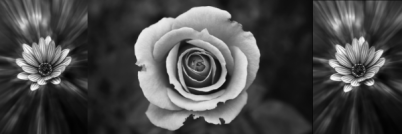For me, worldbuilding is a really important element when deciding the rating I’ll give a book. I’m not sure what the ‘correct’ definition is, but to me it’s a combination of the setting, the magic system (if there is one), the history, the culture, the religion, the political system, the language, the institutions (education, economic, judicial etc.) that keep things running, and the mythology of the world.
I love reading about new places, even if they are completely fictional, and I want to feel like I’ve been transported there. To that end, I like the worldbuilding to be detailed and immersive.
So what follows are some books I felt had phenomenal worldbuilding.


The Night Circus by Erin Morgenstern
Set primarily in the UK and the US during the late 19th century, The Night Circus is a lush, atmospheric novel. While the setting is not new or unfamiliar, the way Morgenstern described the Circus in particular was magical, for want of a better word. I felt like I had been transported there, and I experienced it through all of my senses. I felt like I could smell the wood smoke, and taste the caramel popcorn. That is how real it was to me.

The Bone Witch by Rin Chupeco
I’d describe this as an Asian fusion fantasy, with very distinct Filipino & Japanese elements. Chupeco has created an expansive and detailed world for her characters to inhabit. She has not only mapped a world with various countries (all with their own unique history, culture, customs, religion, traditions and political systems), she has also constructed a fascinating hard magic system. Without gushing about it too much, it encompasses elemental magic and necromancy, and one’s gender and abilities determine the direction of one’s life. Men join the military, while women are trained to be asha (essentially geisha).

Strange the Dreamer by Laini Taylor
I could rave for hours about Strange the Dreamer. The whole premise had me hook, line and sinker. A bookish librarian goes on an adventure to a lost city! What I loved the most was the writing and the world the characters inhabited, whether waking or dreaming. The dreamscapes had so much beauty and whimsy, while the real world was gritty (and sandy) and a bit darker. The magic in this book is limited to certain characters who possess one particular ability. Minya, with her ability to control ghosts, and Sarai, who can alter dreams, were particularly fascinating to me. The whole experience of reading Strange the Dreamer was absolutely magical, and I want to give a copy of the book to everyone I meet.

Nevernight by Jay Kristoff
Yes. I DNF’d this book. But six months later the world is still so fresh in my mind that it would be remiss of me not to include it on this list. The descriptions of the world were particularly vivid, while the magic was dark and creepy. One of the enduring images I have from reading this book was the description of Godsgrave being built in and around the giant bones of long dead creatures (gods or demons maybe? The exact nature eludes me). What I found both fascinating and distracting was that a fair amount of worldbuilding was conveyed through footnotes. I still can’t decide if this is annoying, or absolutely genius. Kristoff included random notes about history, and culture, and customs in these notes, which were eminently fascinating, but which did not seem to necessarily have any particular relevance to the plot. Still, I can’t stop thinking about Godsgrave and the Red Church.

Dark of the Moon by Tracy Barrett
This is a retelling of the Greek myth of Theseus & the Minotaur, told from perspectives of Ariadne and Theseus. What I particularly loved about this novel was the focus on a society (Minoan in this case) where religion and politics were heavily interwoven, and featured women in positions of power. While the myth obviously has threads of fantasy woven through it, Dark of the Moon offers rational explanations for those elements, at least eventually, so it falls under the historical fiction genre. What was most successful about the politico-religious system of Krete in this book, as represented by Ariadne, was the contrast with the very patriarchal Greek system of Athens, as represented by Theseus.

Stain by A. G. Howard
Stain is a fairly hefty tome, but if you can tolerate the changing pace throughout the book it is well worth the read. For starters, the writing and descriptions of the world and its people are gorgeous. It also manages to capture that fairytale atmosphere – the sense of horror and whimsy all in one package. It is touted as a Princess and the Pea retelling, and I can definitely see the similarities, but it also has elements of other stories, such as Cinderella, Snow White, Sleeping Beauty and The Little Mermaid. The basic premise is that the world was cursed and split in two, one country now exists underground and is lit by the stolen moon, while the other is above ground and exists in permanent sunlight. The very fact that the author was able to convey this paradox in a believable way is a miracle, but she also makes it beautiful.

Children of Blood and Bone by Tomi Adeyemi
What Children of Blood and Bone did well was the worldbuilding. While I think the plot was fairly generic, the setting and the magic really stole the show. Since our characters are essentially going on a quest, there were a lot of different places explored throughout the novel. Adeyemi did an excellent job describing them so my mental images were wonderfully vivid and detailed. There were jungles and deserts and arenas with life size ships battling it out to win. The other thing I loved was the magic system. While it was a seemingly typical elemental based magic system (plus necromancy), it was linked with the religious system, and different gods were responsible for bestowing different kinds of magic. The mythology surrounding the Orisha was completely fascinating to me, and full of colour and detail.

Three Parts Dead by Max Gladstone
While the plot and the characters were excellent, the worldbuilding was my absolute favourite part of this novel. It was so completely unlike anything I’ve ever read in my life. And that is definitely a complement. Frankly, I love the way Max Gladstone’s mind works. Three Parts Dead is set in a world of gods, and gargoyles, and vampires, and Craftsmen who practice magic and contract law simultaneously. The whole premise centres around the murder of a god, and a young Craftswoman building a case for the law courts proving said murder. It is a completely unique and fascinating fantasy novel that I highly recommend for anyone looking for something a bit different.


Nice choices !!!! I actually did enjoy the footnotes in Nevernight a lot 😜😜😜
LikeLiked by 1 person
It probably had more to do with the format than anything. I read it on Kindle, and they were more like endnotes, so I’d have to flip back and forward every time. When the info wasn’t super relevant to the story I’d start to lose track. I’m tempted to buy a cheap paperback copy and give it another go.
LikeLiked by 1 person
I alternated between the paperback and kindle, so I definitely understand what you mean…. The footnotes were mostly irrelevant but I just found them hilarious… I guess it was a nice change from the dark theme of the story itself …
LikeLiked by 1 person
100% agree on Children of Blood and Bone! Wasn’t the best story, but the world-building was incredible. You could really tell how much effort and live had gone into that part.
LikeLiked by 1 person